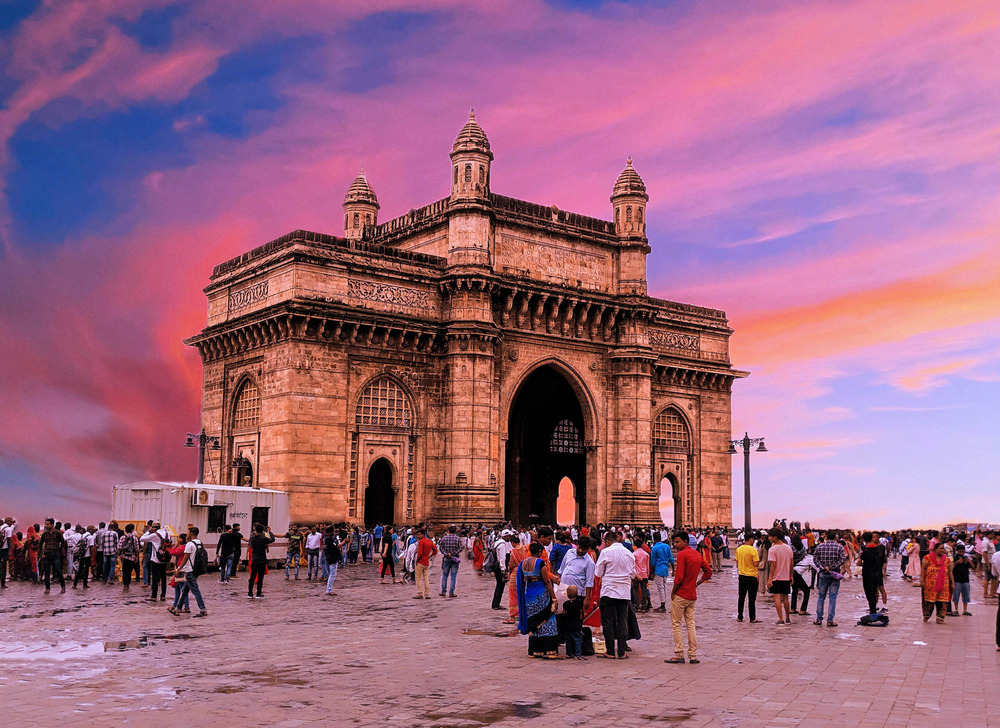Bombay, Mumbai—whatever you want to call it—is a kaleidoscope layered with complex charisma and frenetic energy. With its chaos and music, its sounds and smells, the city has been immortalized in many literary works, fiction and non-fiction alike.
My debut novel, Such Big Dreams, took me a good ten years to write. In that time, I managed to travel back to Bombay twice, seizing opportunities to visit some of the locales featured in the story: Juhu Beach, where the scent of fried snacks wafts down the sand. The local trains, packed tight with commuters, where a seat with good breeze is almost worth swinging a punch over. What better way to write about a place than to physically immerse yourself in it, meditate on its contours, and then furiously scribble it all down minutes later?
Back home in Toronto, though, those memories faded with the months and years that passed since my last visit. As I wrote and edited on dark, wintery mornings, I found myself turning to contemporary literature about Bombay, longing to reconnect with the city’s heartbeat.
Maximum City: Bombay Lost and Found by Suketu Mehta
In this work of nonfiction, Mehta takes his readers on a whirlwind ride through the sprawling city of Bombay that symbolizes the Indian dream for many migrants. The book chronicles the lives of bar dancers, film-makers, migrant workers, rival gang members, politicians, offering social commentary on the interplay between power, pleasure, corruption and labour.
“A city like Bombay,” Mehta writes, “like New York, that is a recent creation on the planet and does not have a substantial indigenous population, is full of restless people. Those who have come here have not been at ease somewhere else.”
Narcopolis by Jeet Thayil
Beginning in the 1970s and carrying us to the recent past, Narcopolis is a haunting, hallucinatory novel about Bombay’s opium culture. A sprawling series of vignettes on characters like an opium addict, a eunuch named Dimple and a poet-slash-artist, the book takes the reader through the seedy underbelly of the city, asking at one point, “How the fuck are you supposed to live here without drugs?”
Last Man in Tower by Aravind Adiga
In this novel, a ruthless developer offers the occupants of a crumbling old apartment building a buyout so he can build a luxury high rise tower. As the clock counts down to the developer’s deadline, forgotten dreams bubble to the surface as neighbors are pitted against each other and families are torn apart
In Bombay, virtually everything is for sale: “In the continuous market that runs right through southern Mumbai, under banyan trees, on pavements, beneath the arcades of the Gothic buildings, in which food, pirated books, perfumes, wristwatches, meditation beads, and software are sold, one question is repeated, to tourists and locals, in Hindi or in English: What do you want?”

Milk Teeth by Amrita Mahale
Set in the 1990s, Milk Teeth charts the relationship between two childhood friends as their neighborhood teeters on the brink of change. Digging into nostalgia, urbanization, and the notion that a city is an amalgamation of communities, Mahale highlights the absolute freedom that Bombay life can offer as well as the claustrophobic societal conditions from which unmarried women, queer men, and minorities search for reprieve.
Beautiful Thing: Inside the Secret World of Bombay’s Dance Bars by Sonia Faleiro
Beautiful Thing is a non-fiction account of the life of Leela, an ambitious young bar dancer. The book follows Leela into dance bars, brothels and tiny flats as she tries to carve out a better life for herself. Faleiro pinpoints paradoxes that make up Leela’s unforgiving world—glamor and squalor, pleasure and pain—as she fights to survive.
“When you look at my life, don’t look at it beside yours,” Leela says to Faleiro. “Look at it beside the life of my mother and her mother and my sisters-in-law who have to take permission to walk down the road.”
Behind the Beautiful Forevers by Katherine Boo
This book of non-fiction is about the residents of Annawadi, a sprawling slum flanked by the international airport and a handful of gleaming luxury hotels. Never patronizing, never romanticizing, Boo carefully digs into the abject conditions of her subjects and the complications of crushing poverty.
“In Annawadi,” she writes, “fortunes derived not just from what people did, or how well they did it, but from the accidents and catastrophes they avoided. A decent life was the train that hadn’t hit you, the slumlord you hadn’t offended, the malaria you hadn’t caught.”
Sacred Games by Vikram Chandra
Sacred Games is a 900-page saga that charts the story of a police officer and a larger-than-life gangster in a game of cat and mouse. The book takes the reader through the gritty underworld, to the corruption of the film industry. Full of filthy Bambaiya slang, and featuring a cast of colorful characters, the novel is a lesson on Indian post-colonial history and a love story to the city, summed up by the line: ‘When you’re away from it, you can miss it, physically you can ache for it—even for the stink of it.’

